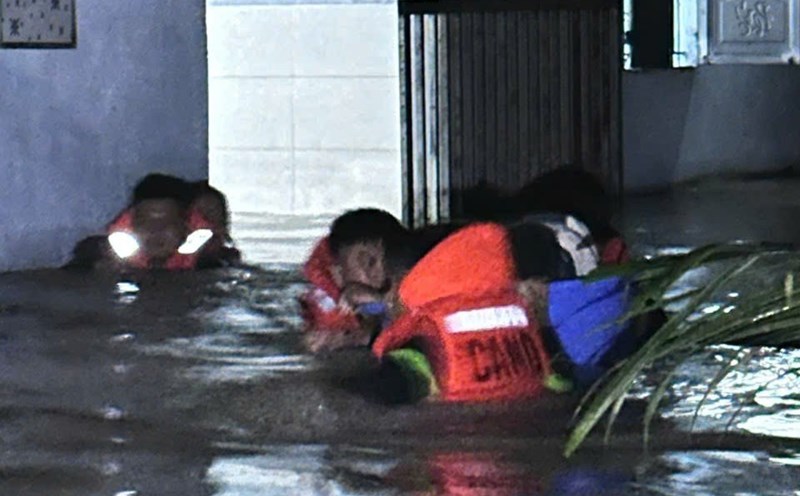CNN's latest hurricane report says Milton made landfall near Siesta Key, Florida, US as a Category 3 storm with sustained winds of 193 km/h and stronger gusts.
Seen from satellite, the moment Hurricane Milton made landfall on the Florida coast was a moment of shaking and caused many concerns for hurricane forecasters. As Milton approached Florida, an 8.5 m high wave was recorded 40 nautical miles from the center.
According to the US National Hurricane Center, Hurricane Milton is currently a Category 2 hurricane. The storm has winds of 177 km/h, with stronger gusts. The center of the storm is currently 32 km northeast of Sarasota, Florida.
CNN noted that Milton's level has changed, but the dangerous impact of the storm, which was once a Category 5 super typhoon, is not. The danger of Milton is forecast to extend hundreds of kilometers from the center of the storm by the end of October 10.
The US National Hurricane Center said the storm continues to cause life-threatening sea levels, heavy rains causing flooding and strong winds that will greatly affect areas far from the storm's center.
According to the latest hurricane forecast, Milton will maintain hurricane strength as it moves through central Florida through the morning of October 10, local time.
Milton is the fifth hurricane to hit the US this year in the Atlantic hurricane season, along with Category 1 Beryl, Category 1 Debby, Category 2 Francine and Category 4 Helene.
CNN notes that there will be more hurricanes making landfall in the US in 2024 than in 2021-2023 combined.
As Milton made landfall in Florida, power outages in Florida doubled in just over an hour, leaving more than 1.1 million homes and businesses in the dark, according to PowerOutage.us.
The most significant power outages occurred in Sarasota County, where Milton made landfall at around 8:30 p.m. on October 9, eastern time and nearby Manatee and Hardee counties. Power outages are expected to increase as winds move inland as Milton contributes.
According to CNN forecaster Brand Miller, Milton caused St. Petersburg to lose ground. Petersburg recorded "year-on-year" rainfall. 230 mm of rain fell for more than three hours as Milton's heaviest rainfall stopped in the Tampa Bay area on the evening of October 9. This rainfall is not just " seeing it all year round" in St. Petersburg. Petersburg but also the average rainfall of more than 3 months fell in 3 hours in this city.
The National Weather Service warned that major flash floods are occurring or are expected to begin soon and are at risk of threatening life. flash flood warnings have been issued for nearly 2 million people, including Tampa, St. Petersburg. Petersburg and Clearwater.
There have been "many deaths" recorded in St. Petersburg. Lucie, on the state's Atlantic coast, after a tornado struck the area.
Cities such as Lakeland, Kissimmee, Orlando and Cape Canaveral are all in the expected path of Hurricane Milton.











